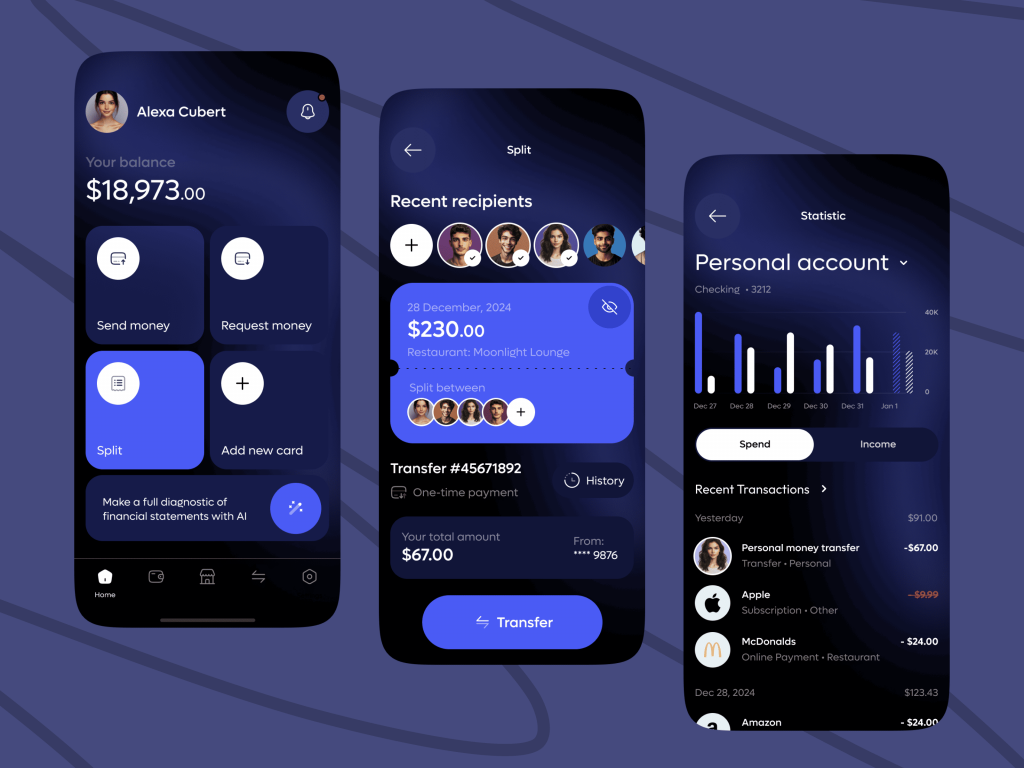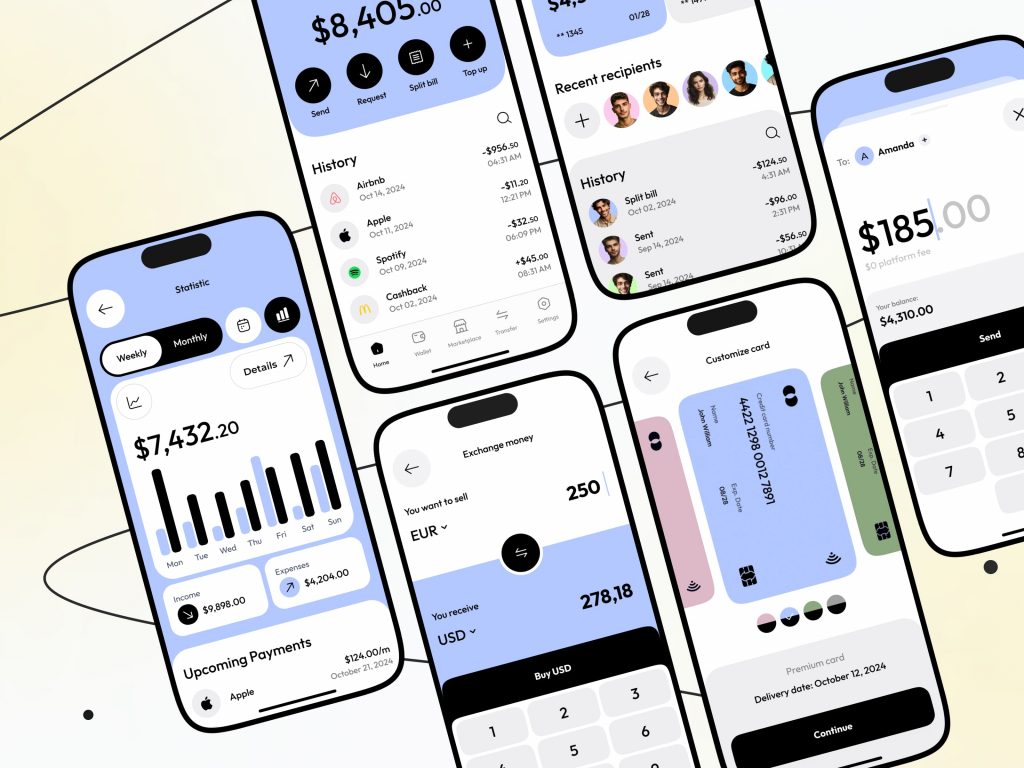Despite funding slowdowns in the broader tech space, fintech remains a magnet for smart investment—and for good reason. The demand for secure, user-friendly, and data-rich financial apps is still climbing. In this guide, we explain how to build a competitive fintech app that stands out and gets to market fast.
At Tino Agency, we help founders and financial institutions turn fintech ideas into scalable, compliant, and investment-ready products. Here’s our approach in 2025.
📊 Fintech in 2025: Why Now Is Still the Time

Even with global investment dipping to $51.9B in early 2024, high-profile rounds (Ramp: $150M, Altruist: $169M) prove that fintech remains resilient.
If your solution addresses open banking, embedded finance, mobile-first transactions, or underserved financial audiences, you’re still early.
🔧 Types of Fintech Apps to Build
- 💸 Payments & Transfers
- 📈 Investment & Trading
- 🏦 Neobanking
- 🛡️ InsuranceTech
- 🤖 Robo-Advisors
- 💬 Personal Finance Chatbots
- 💳 BNPL (Buy Now, Pay Later)
Embedded finance and regulatory tech (RegTech) are key growth areas.
🚀 8 Steps to Launch a Fintech App

- User Authentication & Onboarding
Secure sign-up with KYC/AML compliance. - Secure Cloud Infrastructure
Use SOC 2-compliant cloud hosting. - Bank & Credit Data Integration
Via APIs (Plaid, Yodlee, etc.) - Payment Gateway Setup
Stripe, Braintree, or custom processors. - Chat & Support Tools
In-app messaging or AI-based bots. - Analytics & Dashboards
Custom visualizations for users or admins. - Bonus Features
Budgeting tools, gamification, alerts. - Legal & Regulatory Layer
GDPR, PCI DSS, PSD2, and local financial laws.
🛡️ Must-Have Features for 2025
- 2FA & biometric logins
- Real-time payment tracking
- Automated risk scoring
- Personalized financial recommendations
- API/webhook support for B2B use
🧠 What Speeds Up Fintech App Development

- Interactive Prototypes: Validate features before writing code
- Prebuilt Fintech SDKs: Save weeks on auth, payments, reporting
- AI in DevOps: Use AI tools for faster QA, code generation
- Agile Teams: Ship usable releases every 2–3 weeks
At Tino, we use rapid prototyping and continuous validation to reduce time-to-market without cutting corners.
💰 Fintech App Development Costs

- MVP: $80,000–$180,000
- Full-featured App: $200,000–$500,000+
- Timeline: 4 to 9+ months
Cost is influenced by feature depth, compliance, and integrations. We offer clear budgeting with no surprises.
🌍 Going to Market: Strategy Highlights
- Launch with a niche focus
- Partner with data providers or banks
- Leverage fintech communities (Twitter, Product Hunt, Substack)
- Build in public (share product learnings)
FAQ: Building Fintech Apps in 2025
Yes. The market is maturing, but real problems still need better tools.
Start with a prototype, test with real users, and refine before development.
Frontend: React/Flutter. Backend: Node.js/Go. Cloud: AWS or GCP. Security: SOC2 + custom.
Work with an experienced dev team and legal counsel. Compliance is built in at Tino.
Absolutely. We’ve helped fintech startups go from zero to revenue and investment across Europe and North America.
📞 Let’s talk about your fintech product idea. We’ll help you scope, build, and launch something investors (and users) will believe in.
